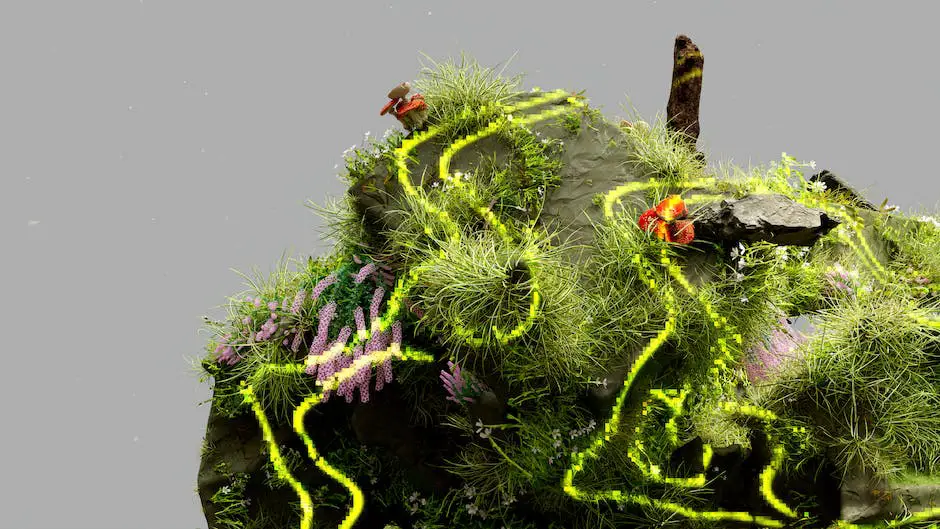Roots, often hidden beneath the earth’s surface, are a cornerstone of existence not only for trees but all terrestrial life forms. They not only offer stability and draw up essential nourishment for the tree but also facilitate a deep-seated communication system, underpinning the interconnectedness of forest life, an idea that nudges our accustomed thinking towards realising the profound harmony harnessed in nature. This essay aims to plunge into this often overlooked microcosm of nature’s design, exploring the intricate anatomy, impressive functionality, and the subtle social dynamics of tree root systems. We traverse across the avenues of plant communication configurations, the fascinating world of mycorrhizal networks, the ‘Wood Wide Web,’ and the latest in scientific research, tying it all together with an understanding of their ecological implications.
Understanding Root Systems
Root Systems: A Lifeline Deep Below The Surface
Plunging deep below the soft embrace of the Earth, occasionally even exceeding the above-ground stature of a tree, resides the less-celebrated but equally vital undercarriage: The root system. There is unseen magnificence within the intricate subterranean sprawl of a tree’s root system, as crucial to the tree’s survival as the leaves that sway gently in the breeze.
Where there is a leaf, there is a root; where there is a branch, there is the hidden claw gripping the soil. To believe that the root is a mere anchoring device is to underestimate its undeniable significance. In this discussion, we address the layered complexities of root system functionality and underscore the indispensable role they play in the life of a tree.
Efficient Absorption and Nodal Magic
Prevailing wisdom credits roots with the responsibility of water and nutrient absorption from the ground—a task not merely accomplished by existing but by adroitly evolving to enhance the tree’s survival rate. Roots, inherently porous, use these capillaries to enable a constant stream of nutrients up into the tree through a principle known as capillary action.
Exquisite is the sight of the root-tip, the home of meristematic cells that divide tirelessly to perpetuate root growth. Also residing in these regions are root caps that shield these embryonic cells from harm as the root penetrates the soil. Plunging further into the anatomy, it’s discovered that inherent in most tree roots are nodes historically disregarded as nothing more than repository junctures. New revelations, however, hail these nodes as miniature laboratories brewing a concoction of hormones stimulating growth and directing root trajectory.
Symbiotic Benevolence and The Immune Fort
With fascinating elegance, roots establish symbiotic relationships with soil fungi, resulting in a nutrient exchange that enhances survival odds for both entities. This partnership, known as mycorrhizal associations, allows the tree to access nutrients beyond the root’s traditional reach.
Perhaps the girthiest feather in the root’s cap is its ability to contribute towards the tree’s immunity. Offering more than mere physical support and nutrient procurement, roots synthesize defensive compounds fortifying the tree against a multitude of pathogenic threats—a bulwark slipping unappreciated beneath our heel.
Epilogue
Eschewing hubris, roots remain unseen—forever toiling beneath the earth—unaware of the sounds of admiration for the leafy array above. From casual observation, a tree appears to rise graciously from the ground, basking in sunlight; it introduces a calming rustle, a seasonal candy-shop of colors, and offers inviting arms to a diverse range of species. Yet, while the leaves bathe in admiration and the trunk basks in its strong and stolid fame, let us cast our thoughts downward, honoring the incredible lifeline tethering the tree to the essence of its existence. What is perceived as silent, passive roots are in fact dynamic lifelines, operating the tree’s survival mechanisms with vigilance and subtlety. Such is the marvel of the quiet nobility of roots, a testament to nature’s ingenuity.

Plant Communication
The Silent Dialogue Among the Trees: The Science of Arboreal Communication
The astounding phenomenon of tree communication, a complex interaction that unfolds beneath our very feet, provides a glimpse into the rich diversity and interconnectedness intrinsic to the ecosystem. Without the need to delve into the realm of anthropomorphisation, it is salient to discuss how trees, using a sophisticated biological network, communicate to ensure their survival.
In the forest, beyond the visible spread of foliage and towering trunks, numerous trees are engaged in a continuous, interactive dialogue. This communication operative, scientifically termed as ‘the Wood Wide Web’, is facilitated through a network of root-based, underground intersections called mycorrhizas. Often described as the internet of the forest, this intricate network is akin to a tree’s own social network, interconnected with other trees, irrespective of species.
The key to this woodland connectivity lies in mycorrhizal associations – a mutualistic symbiotic interaction between tree roots and fungal mycelia. Attachment of fungal mycelia enhances not only the tree’s nutrient absorption range, but also forms the communication pipelines between trees. In essence, soil fungi function as nature’s postal workers, transmitting crucial information between trees across varying distances.
Undeniably, this communication aid, embellished with molecular language, is an integral part of the forest’s ecological balance. Information transmission through mycorrhizal networks enables a tree to alert its neighbours in the face of imminent herbivorous threats, thereby leading its neighbours to produce defensive chemicals. This altruistic communication helps trees in collective defence, a functional aspect crucial for the preservation of the collective tree community.
On the phenomenon of resource-sharing, through these very same mycorrhizal networks, trees exchange elements crucial for survival, such as carbon, nitrogen, and water, especially during times of scarcity. Remarkably, research suggests that mature, well-established trees, or ‘mother trees’, may even assist younger, less robust trees in this manner, demonstrating an intriguing albeit complex aspect of forest ecology.
In this realm of communication lies an awe-inspiring insight into interspecies cooperation. Distinct species of trees have been observed to form these social networks, thus defying the traditional competitive narrative of survival. This interconnectedness, rather than isolation, appears to be the fundamental strategy of facilitating survival in these complex ecosystems.
As we continue to delve deeper into this remarkable domain of arboreal communication, it is essential to recognise the urgent need for its conservation. The unseen language and dialogues within the forest biome underscore the immense complexity and interdependence of life forms. Hence, the understanding and preservation of these wood wide webs can indeed construct a more holistic, better-informed approach towards the stewardship of our indispensable forest ecosystems.
In summary, tree communication, with its profound implications in forest ecology, marks another verdant frontier in our understanding of the natural world. This deeper comprehension opens possibilities for a symbiotic human-nature coexistence, an aspiration intrinsic to the narrative of sustainable development.

Photo by aaronburden on Unsplash
Mycorrhizal Networks
Mycorrhizal Networks: Inter-Tree Communication’s Unsung Heroes
In the world beneath our feet, a riveting tale of biological synergism unfolds, threaded together by intricate networks better known as mycorrhizal networks. These networks, seamlessly weaving the ‘Wood Wide Web’ to life, are the epicentres of inter-tree communication, serving vital roles in resource sharing, collective defense and maintenance of the tree community.
A mycorrhizal network is essentially a fungal superhighway, underpinned by a symbiotic relationship between mycorrhizal fungi and the root systems of trees. The ‘mycelium’, a white, filamentous structure of the fungi, extends beyond the limitation of roots, creating a subterraneous system that links individual trees together. This interconnectivity is a testament to the ‘social’ nature of trees, challenging conventional Darwinian ideologies of fierce competition and survival of the fittest.
In terms of inter-tree communication, mycorrhizal networks facilitate the transmission of vital biochemical signals such as hormones, RNA, and nutrients. It is through this molecular language that trees alert each other to impending dangers, propagating signals of pest infection or environmental stress, and orchestrating collective defense mechanisms. This results in a forest that stands vibrant, resilient and with an enhanced capacity to endure adversarial threats.
These networks also mediate resource-sharing among trees. Nutrients and water are efficiently mobilised through these webs, ensuring nutrient balance and enhancing the overall vitality and health of the interconnected trees. Intriguingly, this system is egalitarian in nature, underpinned by what some scholars term ‘mother trees’ that ensure the distribution of resources to less advantaged saplings and lesser developed species.
However, the existence of such networks and the vital roles they play are being increasingly threatened by human activities, including deforestation and harmful monoculture practices that disrupt the delicate ecosystem balance. Current research underscores a growing need for the conservation of the mycorrhizal networks, highlighting their indispensable role in the survival of tree communities.
In a broader ethos, the existence and prominence of mycorrhizal networks illuminates an underemphasized aspect of biology – cooperation and interconnectedness, cogently reinforcing that in biology, just as in society at large, unity is strength. Finally, the insights gathered from the study of these networks should compel us to re-assess our actions and their impact on these hidden biosystems, serving as a stark reminder that without them, we are a world stripped of our most majestic forests.

Research Study Highlights
Emerging Perspectives On Tree Root Systems And Sociability: Navigating The Latest Research
Challenging our traditional understanding of ecology, trees, once seen as solo protagonists in their existence, are now accented as social beings. These plants albeit tolerance, cooperation, kin recognition, nurturing of seedlings, and even intergenerational communication. A close perusal unravels a world of facinating interactions beneath the surface.
Recognising this, research has been increasingly focusing on the modus operandi of these interactions within tree societies, underlining the advanced capabilities of tree roots and their complex design to instigate network dynamics within forest ecosystems.
Sophisticated experiments that utilise isotopically labelled sugars map real-time nutrient exchange within tree communities, a radical departure from the singular narrative of trees competing for resources, positing the presence of mutualistic symbiosis. The process of ‘kin recognition’ is also under scrutiny, with findings suggesting that trees are capable of self-identification, preferentially allocating resources to neighbouring kin.
Moreover, pioneering studies by the globally-renowned forest scientist, Professor Suzanne Simard, shed light on the dynamics of ‘mother trees’. These are the oldest and largest trees that act as central hubs of root systems, nurturing younger trees by sending nutrients through an intricate network of interconnected roots. This parental stewardship also extends to communication, with ‘mother trees’ alerting offspring to changes in environmental conditions, enabling them to adapt proactively.
Venturing into the novel domain of bioacoustic research, scientists have leveraged modern technology to analyse vibrational frequencies in plant roots. Surprisingly, it is suggestive of the fact that these frequencies mediate some form of communication between trees, a dynamic repertoire far beyond our initial comprehension.
Furthermore, an under-explored territory is the implication of root intelligence. Intriguingly, studies exploring root tip movements compare them to a brain-like command centre, demonstrating a noteworthy adaptive ability in response to environmental parameters.
Incorporating both field-based and computational research, scientists have successfully modelled impressively complex ‘plant-brain’ architectures. This is aiding in the analysis of root behaviour during resource acquisition, navigation, gravity perception, and mechanical impedance, thereby bridging the knowledge gaps in understanding root intelligence.
However, with rapid modification and fragmentation of habitats due to urbanisation and climate change, the delicate balance of these root systems is under threat. Strikingly, researchers have noted the negative impact of such disruptions has on the transmission of signals between trees, subsequently impairing collective responses to threats and overall forest health.
The momentum must endure to further this nascent yet promising area of botanical research. Realising the depth of such interactions that facilitate a complex blend of competition and cooperation, the term ‘tree society’ no longer seems hyperbolic. Indeed, the latest groundbreaking research into root systems draws a resplendent portrait of the forest, depicting an engaging tapestry of interconnectivity and interdependence.
Note: The image accompanying this text is an artist’s depiction of tree roots intricately connected and intertwined, symbolizing the complex social interactions and intelligence of tree root systems.

Significance and Impact on Ecosystem
Implications of Tree Communication on Forest Health and Biodiversity
Present research and observations increasingly underline the gravity of tree communications within forest ecosystems. The ongoing discourse orbits around the pivotal role of tree interaction and collaboration in maintaining forest health and biodiversity, expanding our vision of these dynamic entities as multidimensional ecosystems rather than static collections of independent organisms.
The well-being of an entire forest can be inherently linked to tree communication. Experiments have demonstrated that trees can generate positive effects on their neighbouring plants through a network of underground conduits, fostering diversity and improving overall forest health. Forest ecosystems exhibit a convolution of mutual dependencies, wherein each species plays a crucial role in maintaining the balance.
The conservation of this intricate communication is gravely essential due to its determinant role in forest biodiversity; an intricate web that feeds on the complex interplay between various tree species and their associated organisms. This biodiversity is not just the product of the physical environment but is significantly influenced by the communicative interplay among the trees themselves. A disruption in this network could trigger a domino effect, cascading across the entire biome.
It’s astounding to observe how trees use complex bio-chemical signalling systems not only to combat pests but also to warn other trees of potential danger. Messages transmitted through chemical signals result in neighbouring trees bolstering their own defenses proactively, manifesting as a collective defense mechanism.
Recognising the implications of anthropogenic actions on this seedling to tree life-cycle and associated communication processes is crucial. Industrial activities like unregulated logging, mining, and urbanisation can lead to habitat fragmentation, thus disrupting communication between trees, impairing collective responses, and damaging forest health.
Recent research also substantiates the concept of ‘root cognition’ considering plant roots as cognitive entities. This cognition is primarily created through an elaborate network of information exchange, vital to the survival and well-being of the forest. In addition to communicating threats or resource availability, there seems to be a system of kin recognition, by which trees distinguish between their kin and other trees.
Thus, maintaining the vitality of these tree communities through efforts focused on conservation and sustainable practices is imperative. Human-induced disruptions can lead to irreversible changes within these complex networks, threatening not only the very existence of these forests, but the biodiversity they nurture, and the essential environmental services they provide.
In conclusion, understanding forest ecosystems from the lens of tree communication, cooperation, and mutual interaction offers a holistic and more informed perspective of our flora. It encourages a shift in mindset, urging us to consider trees as social organisms engaged in collective survival rather than solitary units. This knowledge could set the precedent for changing how we interact with these natural ecosystems, hopefully stirring a movement towards more responsible and sustainable practices. Embarking on a more synergistic relationship with forests could conjure enormous benefits – from mitigation of climate change to maintaining Earth’s biodiversity, and the continual discovery of botanical wonders that are yet to be unveiled.

When the whispering winds cascade through the vibrant leaves and the branches sway in an age-old dance, it is a testament to the symphony of life not just on the surface, but deep within the silent heart of the forest. The ethereal secret social life of trees, mediated through their root systems and the enigmatic ‘Wood Wide Web’, is inextricably linked with the overall health and diversity of our forest ecosystems. The importance of understanding these intricate networks surpasses simple conservationism; it is a matter of unlocking the harmonious language of coexistence that trees have perfected over millennia. Interpreting their communication might offer new strategies for human sustainability, specifically in forestry management and biodiversity protection. Indeed, in the silent universality of roots, we find a mirror asserting the vital prerequisites of every societal organisation – communication, cooperation and mutual respect. Herein lies the beauty of roots; though unseen, their reach and influence remain truly vast and impactful.
